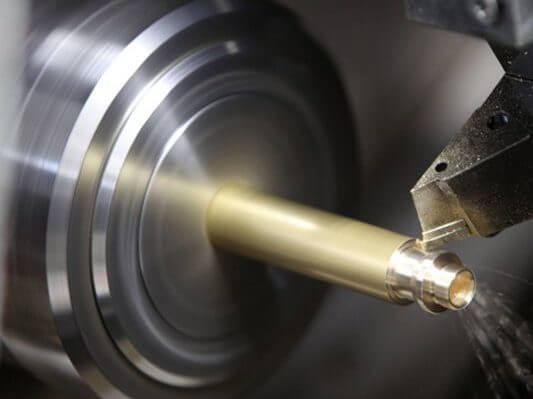Turning Milling Composite Service
Turning Milling Composite Machining
Turning Milling Composite Machining is currently one of the most popular processing technologies in the field of mechanical processing. It is an advanced manufacturing technology. Composite machining is the integration of several different machining processes on one machine tool.
Composite machining is the most widely used and the most challenging type is turning and milling. The turning and milling complex machining center is equivalent to the combination of a CNC lathe and a machining center.
Advantage of Turning Milling
The integration of turning and milling into a composite machining process offers significant advantages in terms of productivity, precision, and cost-effectiveness for mechanical manufacturing. compared with conventional CNC machining processes, the outstanding advantages of composite machining are mainly manifested in the following aspects.
Increased Efficiency
Turning milling offers higher efficiency compared to conventional machining methods, especially for complex components. It can perform multiple operations without the need to re-fixture the workpiece, saving time and improving productivity
Versatility
Turn milling combines turning and milling operations, making it a versatile machining technique. It is well-suited for complex geometries, a wide range of materials, and multi-operation requirements. This versatility allows manufacturers to improve productivity, precision, and profitability
Surface Finish
With the correct settings and optimization, turn milling can achieve desirable surface finishes. It can rival or even surpass conventional machining in this aspect. Turn milling typically achieves tolerances of 10-15 microns, while conventional machining can achieve tolerances of 5-10 microns
Cost-effectiveness
For intricate designs and multi-operation requirements, turn milling often proves to be cost-effective. It reduces setup times and increases efficiency, making it a favorable choice for complex projects
Accuracy
Composite machining centers are capable of high precision, as they can perform multiple operations on a part without the need to re-clamp or reposition it, which can introduce errors.
Reduced Lead Times
The consolidation of operations into a single process can significantly reduce lead times, allowing manufacturers to deliver finished parts to customers more quickly.
What is Successful Turning Milling?
Turn milling is defined as the milling of a curved surface while rotating the workpiece around its centre point.
Eccentric forms or shapes that differ considerably from those that conventional milling or turning operations produce can often be turn milled. The method allows for high metal removal with superb chip control.


CNC turning plastics
Aluminum machining is a fundamental aspect of Leland services catalog, but CNC turning can also be employed to process metals such as magnesium, steel, stainless steel, brass, copper, bronze, titanium, and nickel alloy.
CNC turning is frequently utilized for mechanical and precision components, which are frequently crafted from aluminum, the most readily machinable metal. Aluminum parts can be manufactured with exceptional strength and accuracy, along with an excellent surface finish.

CNC turning plastics
While precision machining is primarily employed for metals, Leland is also proficient in offering CNC turning services for plastic parts. The materials available for CNC turning encompass nylon, polycarbonate, ABS, POM, PP, PMMA, PTFE, PEI, PEEK, among others, enabling the production of highly accurate parts compared to those produced through 3D printing methods.
Choice of turn milling process
Face turn milling – 4/5 axes

Main method for external machining.
- Short tool extensions
- Smaller tool diameters/low torque
- External/slender components
- Profiling
- Not a natural cylindrical surface
- Internal
Periphery turn milling – 3/4 axes


Same principle as for circular interpolation (internal / external), but in turn milling both the workpiece and the cutter rotate.
Used mainly for internal features.
- Internal machining
- Cylindrical surface
- Narrow slots
- Thread milling
- Roundness
- Profiling
- Larger diameters/high torque
- Long overhangs
How to apply turn milling
Cutter position – round inserts/non wiper
Location Cutter

Width of cut

1 = First cut
2 = Second cut
In face turn milling operations, one wiper insert is used to generate the straight line contact between the cutter and the machined surface in order to create the cylindrical part of the component.
Because the milled surface is convex, the wiper land needs to be flat instead of crowned. To cover the full width of the cutter, the tool needs to be placed with at least two offsets, first Ew1 during first revolution of the work piece and then moved to Ew2 for a second cut.
Cutter position – rectangular inserts/wiper


For producing the flattest possible surface in turn milling operations, a small diameter cutter with a width of cut, ae, less than 40% of the effective cutter diameter, DC, is optimal.
However, the ae needs to be increased in order to obtain the best productivity. This can be done by increasing:
- Cutter diameter
- Ratio of radial engagement – ae/DC
To gain acceptable cusp height, the cutter needs to be offset from the centre. The amount of offset depends on the ae, and is taken from the diagram for the respective ae/DC.
Offset and width of cut


Wiper width

Width of cut
The infeed principle in manufacturing
During the turn milling process, the workpiece rotates at a specific speed to ensure proper cutting and machining. The rotation speed of the workpiece is determined based on the recommended feed/tooth for the insert being used. This ensures that the milling tool is fed into the workpiece in the radial direction, allowing for efficient and accurate machining.
